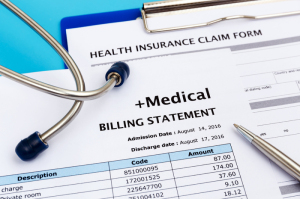By Scott Kimsey
Health care is one of the slowest-developing industries in terms of payment processing – even though health care affects nearly everyone. With industries like retail, food and even hospitality digitizing payments, the health care industry continues to play catch up. In 2015, it took 70 percent of health care providers a month or longer to collect payments from their patients.
Health care providers’ main focus should be providing care – not chasing down payments.




Ad Statistics
Times Displayed: 30773
Times Visited: 789 Stay up to date with the latest training to fix, troubleshoot, and maintain your critical care devices. GE HealthCare offers multiple training formats to empower teams and expand knowledge, saving you time and money
But setting up a modernized payment processing system can be daunting. It’s vital to find a partner that offers a payment solution designed for the health care industry, instead of the retail or restaurant solutions that most payment processors lead with.
In 2016, health care spending rose to $3.4 trillion; it’s expected to reach $5.5 trillion by 2025. Consumer spending alone in the industry could hit $608 billion over the next two years. This provides an even bigger opportunity to streamline payment processing systems across the industry.
Here are three things to look for in a potential partner when it comes to payments.
Multiple ways to pay
Many patients today, especially millennials, are comfortable going cashless and don’t own checkbooks. But switching to online payments isn’t just about catering to millennials. Patients across generational lines are showing an increased preference for online and electronic payments in health care.
According to the Federal Reserve of San Francisco, only 3 percent of consumers identify checks as their preferred method of payment. In fact, studies show that customers don’t want to pay for their health care any differently than how they pay for their basic amenities – reflecting an increasing demand for digital payment options.
Patients are shifting away from paper-based payments, and the use of manual processes for tracking and storing information opens the door to security issues and unintentional breaches of private payment information.
Inaccurate assumptions about payments – for example, that baby boomers want to pay by check, or millennials only make payments online – can also harm the industry. In reality, patients want omni-channel payment options, regardless of their demographics. Providers should look for a partner that can upgrade their payments mix with a variety of options to fit patients’ evolving needs.
24/7 automated payments
People seek the convenience of paying whenever and wherever – not just when the doctor’s office is open. With more patients wanting to pay their bills outside of regular business hours, providers need payment options that don’t require staff assistance – enabling 24/7 payment acceptance with less friction.

